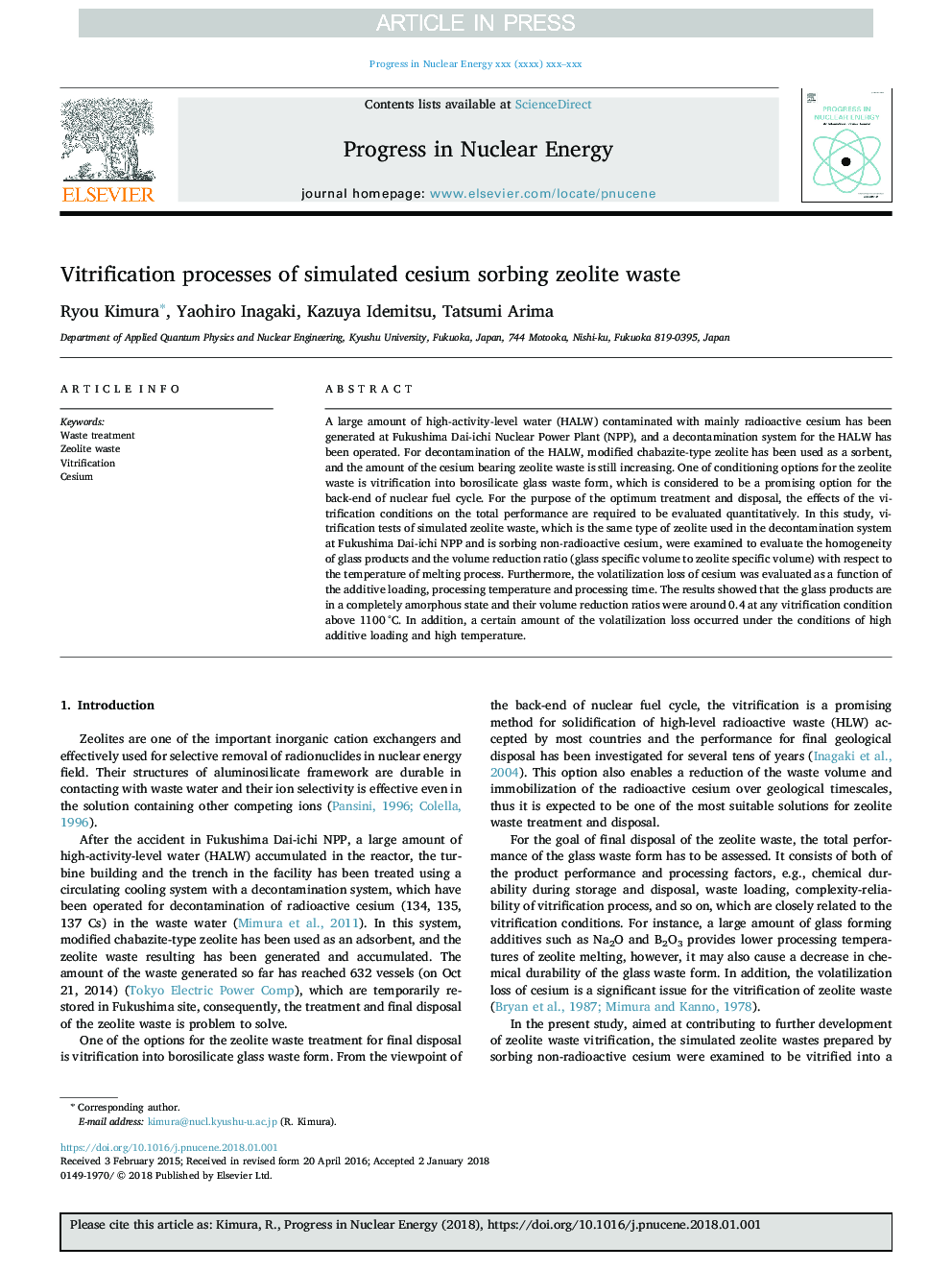| Article ID | Journal | Published Year | Pages | File Type |
|---|---|---|---|---|
| 8084176 | Progress in Nuclear Energy | 2018 | 6 Pages |
Abstract
A large amount of high-activity-level water (HALW) contaminated with mainly radioactive cesium has been generated at Fukushima Dai-ichi Nuclear Power Plant (NPP), and a decontamination system for the HALW has been operated. For decontamination of the HALW, modified chabazite-type zeolite has been used as a sorbent, and the amount of the cesium bearing zeolite waste is still increasing. One of conditioning options for the zeolite waste is vitrification into borosilicate glass waste form, which is considered to be a promising option for the back-end of nuclear fuel cycle. For the purpose of the optimum treatment and disposal, the effects of the vitrification conditions on the total performance are required to be evaluated quantitatively. In this study, vitrification tests of simulated zeolite waste, which is the same type of zeolite used in the decontamination system at Fukushima Dai-ichi NPP and is sorbing non-radioactive cesium, were examined to evaluate the homogeneity of glass products and the volume reduction ratio (glass specific volume to zeolite specific volume) with respect to the temperature of melting process. Furthermore, the volatilization loss of cesium was evaluated as a function of the additive loading, processing temperature and processing time. The results showed that the glass products are in a completely amorphous state and their volume reduction ratios were around 0.4â¯at any vitrification condition above 1100â¯Â°C. In addition, a certain amount of the volatilization loss occurred under the conditions of high additive loading and high temperature.
Keywords
Related Topics
Physical Sciences and Engineering
Energy
Energy Engineering and Power Technology
Authors
Ryou Kimura, Yaohiro Inagaki, Kazuya Idemitsu, Tatsumi Arima,
